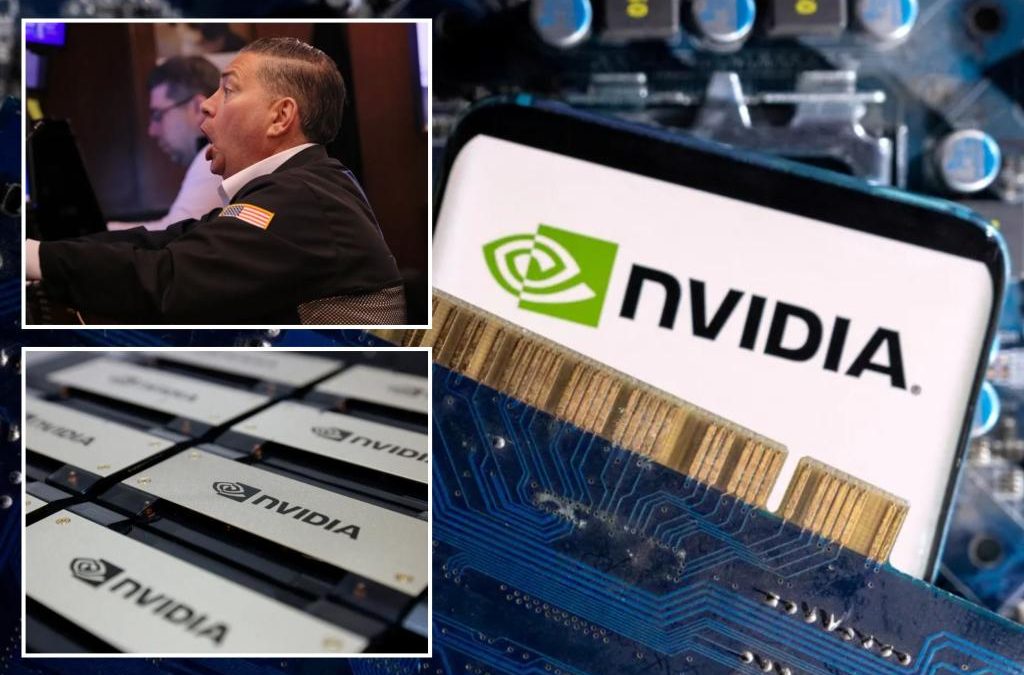Nvidia galloped to a $2 trillion market value on Thursday after the bellwether for AI chip demand once again exceeded Wall Street’s sky-high expectations, re-igniting a global rally in tech stocks.
The chipmaker returned as the third most valuable US company as its shares jumped 15%, or more than $100, to a record high of $780.85. If the gains hold, Nvidia will add about $260 billion to its market capitalization.
The rally in the top-performing S&P 500 stock also lifted its counterparts in the chip sector, sending the benchmark index, Europe’s STOXX 600, and Japan’s Nikkei share average to record highs.
The stock that has jumped nearly 57% this year has emerged as the centerpiece of Wall Street’s gain as it accounted for more than a quarter of the S&P 500’s gains in 2024, making its quarterly results crucial for equity investors.
“It’s giving insight into just how dominant they are in an incredibly high growth space,” said Paul Marino, chief revenue officer at GraniteShares ETFs.
“Everything that they touch in the semiconductor area from robotics, crypto, AI, gaming to autonomous vehicles.. they are producing the best chips and people seem to be unfazed by the high valuations.”
If Nvidia hits the $2 trillion mark, it will achieve the milestone at the fastest pace ever by adding $1 trillion in just about nine months.
Soaring demand for Nvidia’s chips used by companies rushing to upgrade their AI offerings helped the Silicon Valley firm forecast a whopping 233% growth in first-quarter revenue, above market expectations of a 208% rise.
Gains in Nvidia lifted aspiring AI competitor Advanced Micro Devices by 10%, while Super Micro Computer surged 20% and Arm Holdings rose 9.5%. The Philadelphia chip index added nearly 4.4%.
Nvidia, which controls about 80% of the high-end AI chip market, reported a fourth-quarter revenue jump of more than threefold from a year ago to $22.10 billion.
Robust demand for its graphic processing units from massive data centers in the middle of an AI upgrade has been bolstering its revenue growth for three quarters.
“The people who made the most money in the gold rush of the mid-1800s were the ones providing the tools to get the job done, not those hunting for the precious metal,” said Russ Mould, investment director at AJ Bell.
“Nvidia is effectively playing the same role today in this tech revolution.”
Analysts, however, worried that US curbs on chip sales to China may be hurting its revenue growth. Sales in China amounted to about 9% of Nvidia’s fourth-quarter sales, down from 22% in the prior quarter.
The company trades at about 29 times its earnings expectations for the next 12 months compared to an industry median of 25.3, according to LSEG data. A year ago the valuation multiple was at 47.
Rapid increases in analysts’ earnings estimates imply that its forward earnings valuation has fallen even as its share price rises further.
“We’ve gotten well ahead of expectations and baked in a lot for the next three years,” said Paul Nolte, senior wealth advisor and market strategist at Murphy & Sylvest.
At least 17 brokerages raised their price targets after the results.
Rosenblatt Securities was the most bullish with a future price estimation implying Nvidia will hit a $3 trillion market capitalization over the next 12 months.
Meanwhile, short sellers who raised their bearish bets on Nvidia rushed to the exit on Thursday, adding to the buying pressure, said Ihor Dusaniwsky, managing director of predictive analytics at S3 Partners.
With an 11.75% share gain, short sellers have lost $2.2 billion on paper, taking their declines to $6.84 billion so far this year, Dusaniwsky said.
Short-selling involves borrowing a stock to sell it in the expectation that the price will fall. But if the price rises, the seller is exposed to potentially unlimited losses.
Source




